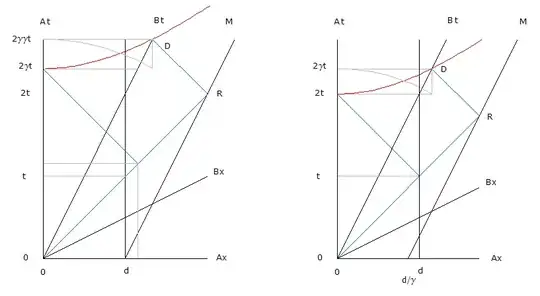The length contraction means that an object is the longest in the frame in which it is at rest.
Lets assume i have a meter stick with length $\Delta x$ in my rest frame which is $x,ct$ and i want to know how long my meter stick seems to an observer moving with a frame $x',ct'$.
1st: I draw world lines of a meter stick in a rest frame and they are vertical (parallel to $ct$ axis) as meter stick is stationary in this frame.
2nd: If an observer in a moving frame $x',ct'$ wants to measure my meter stick he measures its edges at the same moment in his time, so i draw a tilted line (parallel to $x'$ axis).
3rd: If i mesure the length $\Delta x'$ which is a length of a meter stick as observer in frame $x',ct'$ sees it, it seems to me that he sees a longer distance than me.
This is not correct. Could anyone tell me what am i missing here?




